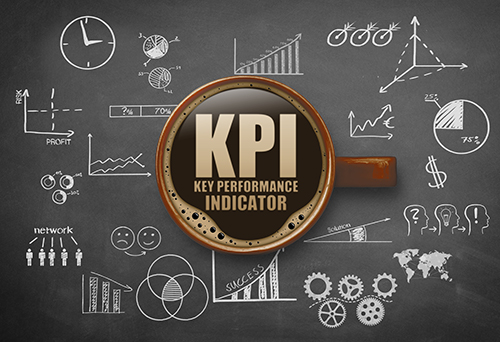In today’s competitive business environment, measuring and tracking performance is crucial for achieving long-term success. Key Performance Indicators (KPIs) serve as vital metrics for evaluating a company’s progress towards its objectives. These indicators are more than just numbers; they are powerful tools that help organizations assess their health, identify opportunities for improvement, and drive strategic decision-making. This article will explore the importance of KPIs, types, how to set them, and the best practices for leveraging KPIs to achieve business goals.
What Are Key Performance Indicators?
Key Performance Indicators (KPIs) are quantifiable measures used to evaluate the effectiveness of an organization, team, or individual in achieving specific business objectives. KPIs provide critical insights into the performance of various business operations and help companies make informed decisions. In essence, KPIs tell you whether your business is on track to meet its goals, whether those are revenue targets, customer satisfaction scores, or operational efficiency benchmarks. KPIs are often divided into two categories:
- Lagging KPIs: These indicators provide data after an event has occurred. For example, quarterly revenue or profit margins are lagging KPIs, as they reflect past performance.
- Leading KPIs: These provide early signals or predictive measures that can influence future performance. Customer inquiries or sales leads are examples of leading KPIs, as they predict future revenue.
By tracking both lagging and leading KPIs, companies gain a comprehensive understanding of their current performance and how future activities might impact their success.
Why Are KPIs Important?
KPIs play a significant role in driving business success, and their importance cannot be overstated. Here are several reasons why KPIs are critical for organizations:
- Measure Progress Towards Goals: KPIs provide a tangible and data-driven way to measure the progress of specific business goals. Whether it’s increasing revenue, improving customer retention, or enhancing operational efficiency, KPIs offer a clear benchmark against which success can be measured.
- Focus Resources and Priorities: KPIs allow businesses to focus resources on the most critical areas for growth. By tracking performance metrics, organizations can ensure that their resources are allocated efficiently and aligned with strategic priorities.
- Decision-Making: KPIs offer valuable insights that support decision-making at all levels of an organization. Whether it’s adjusting marketing strategies, optimizing production schedules, or refining customer service efforts, KPIs provide the data necessary for making informed choices.
- Identify Improvement Areas: Through the use of KPIs, businesses can identify areas of underperformance that require attention. If a particular metric is falling short, it serves as a signal to investigate why that’s happening and what corrective actions can be taken.
- Align Teams: KPIs help align teams within an organization by establishing common goals and measurable outcomes. When everyone in the company understands how their performance contributes to the broader objectives, there is a greater sense of shared purpose and accountability.
Types of Key Performance Indicators
KPIs can vary significantly depending on the business, industry, and objectives being measured. They are typically grouped into categories based on the focus area. Below are the most common types of KPIs:
- Financial KPIs: These KPIs measure financial performance and include metrics such as, Revenue Growth for the percentage increase in revenue over a specific period. Gross Profit Margin for the difference between sales and the cost of goods sold, divided by revenue. Net Profit Margin for the percentage of revenue that remains after all expenses have been deducted.
- Customer KPIs: Customer-focused KPIs track how well a company is meeting customer needs and expectations. Examples include: Customer Satisfaction Score (CSAT): A measure of customer contentment with a product or service. Customer Retention Rate: The percentage of customers who continue to purchase from the business over a defined period. Net Promoter Score (NPS): A metric used to gauge customer loyalty by asking how likely customers are to recommend the company to others.
- Operational KPIs: Operational KPIs measure the efficiency and effectiveness of day-to-day business operations. These include: Cycle Time: The amount of time taken to complete a process from start to finish. Inventory Turnover: The number of times inventory is sold and replaced during a period. Employee Productivity: A measure of output per employee, often calculated based on specific tasks or projects.
- Marketing KPIs: Marketing KPIs evaluate the effectiveness of marketing campaigns and customer engagement. Key metrics include: Cost Per Acquisition (CPA): The cost of acquiring a new customer. Conversion Rate: The percentage of website visitors who take a desired action, such as making a purchase or signing up for a newsletter. Return on Marketing Investment (ROMI): A measure of the profitability of marketing campaigns relative to their cost.
- Human Resources KPIs: Human resources KPIs assess workforce performance and include metrics such as: Employee Turnover Rate: The percentage of employees who leave the company over a specific period. Employee Engagement: A measure of how emotionally invested employees are in their work. Absenteeism Rate: The frequency at which employees are absent from work without valid reasons.
Setting Effective KPIs
To ensure that KPIs provide real value, it’s important to set them up properly. Here are key steps in defining effective KPIs:
- Align KPIs with Business Goals: KPIs should always be linked to broader organizational objectives. For example, if a company’s goal is to expand its customer base, the KPIs might focus on lead generation and customer acquisition.
- Ensure They Are Measurable: KPIs need to be quantifiable to provide actionable insights. A KPI like “improve customer service” is vague and hard to measure. Instead, a specific, measurable KPI such as “reduce average customer service response time by 20%” is more actionable.
- Set Realistic Targets: It’s important to set targets that are challenging yet attainable. Unrealistic targets can demotivate employees, while overly easy ones may not drive meaningful progress.
- Make Them Timely: KPIs should be monitored regularly, whether that’s weekly, monthly, or quarterly. Having a clear timeline ensures that performance is continuously evaluated, and adjustments can be made quickly if needed.
Best Practices for Using KPIs Effectively
Once KPIs are set, it’s essential to track them regularly and use them to inform business decisions. Here are some best practices for leveraging KPIs effectively:
- Regular Monitoring: Frequent tracking of KPIs ensures that a company stays on course. Use real-time dashboards and performance monitoring tools to keep an eye on critical metrics.
- Be Flexible: KPIs are not set in stone. As business environments evolve, so should your KPIs. Revisit them periodically to ensure they are still relevant and reflective of changing goals.
- Ensure Transparency: Communicate KPIs across the organization so that everyone is aware of performance expectations. When employees understand how their efforts contribute to the larger goals, they are more motivated to succeed.
- Analyze and Take Action: KPIs should not be tracked passively. When a KPI shows underperformance, investigate the cause and take corrective actions promptly. Data should inform decisions, not just serve as a record.
Conclusion
Key Performance Indicators are essential tools for measuring and managing business performance. By understanding what KPIs are, why they matter, and how to set and monitor them, businesses can optimize operations, improve decision-making, and drive long-term success. Whether it’s through financial growth, customer satisfaction, or operational efficiency, KPIs provide the insights needed to stay competitive and achieve organizational objectives.



